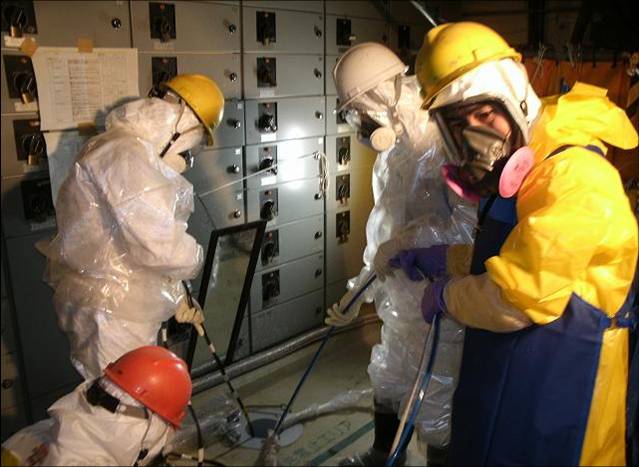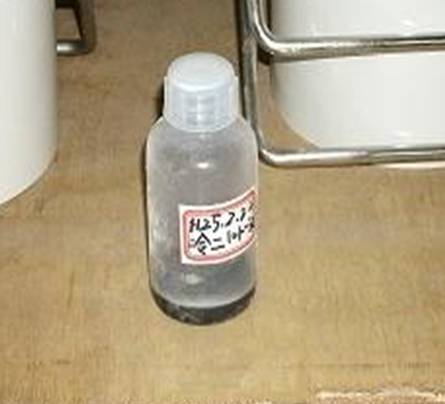Uh... They put the sediment sample in a plastic bottle?
According to TEPCO, the plastic bottle is emitting 4 millisieverts/hour radiation with the sediment in it.
From TEPCO's Photos and Videos Library, 2/22/2013:
Workers in full gear collecting samples through the hole on the first floor of the Reactor 1 building, where the air radiation dose ranges from 2 to 10 millisieverts/hour. It took 20 workers 2 hours and 35 minutes to complete the task, for which they received 1.46 millisievert (maximum) of radiation exposure.





 Tokyo Time
Tokyo Time
![[Most Recent Quotes from www.kitco.com]](http://www.kitconet.com/charts/metals/gold/t24_au_en_usoz_2.gif)


3 comments:
A polyethylene bottle is an appropriate container for reducing α, β, and neutron emission. E.g., from "Neutron Interactions with Matter", P. Rinard:
"Figure 12.8 shows that a cylinder of polyethylene is more effective in preventing the transmission of neutrons than a cylinder of heavy metal. A neutron loses most of its energy by colliding with the light elements in polyethylene and then the mean-free-path length becomes small as the cross sections increase."
http://www.fas.org/sgp/othergov/doe/lanl/lib-www/la-pubs/00326407.pdf
And how much more radiation did the worker with his face uncovered receive? This photo is not reassuring.
A piece of plastic is not going to protect you from gamma radiation (nothing would apart from a full body armor made of lead). The important thing is the respirator and decontamination procedures when you finish.
Post a Comment